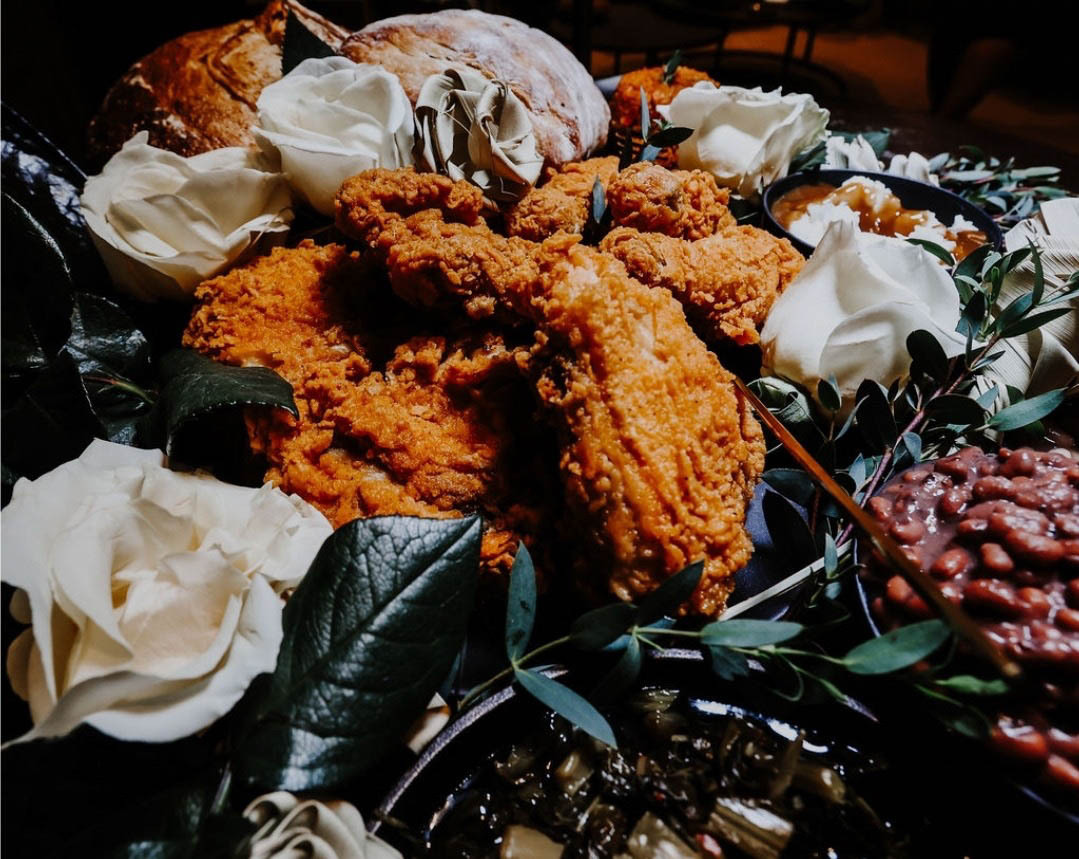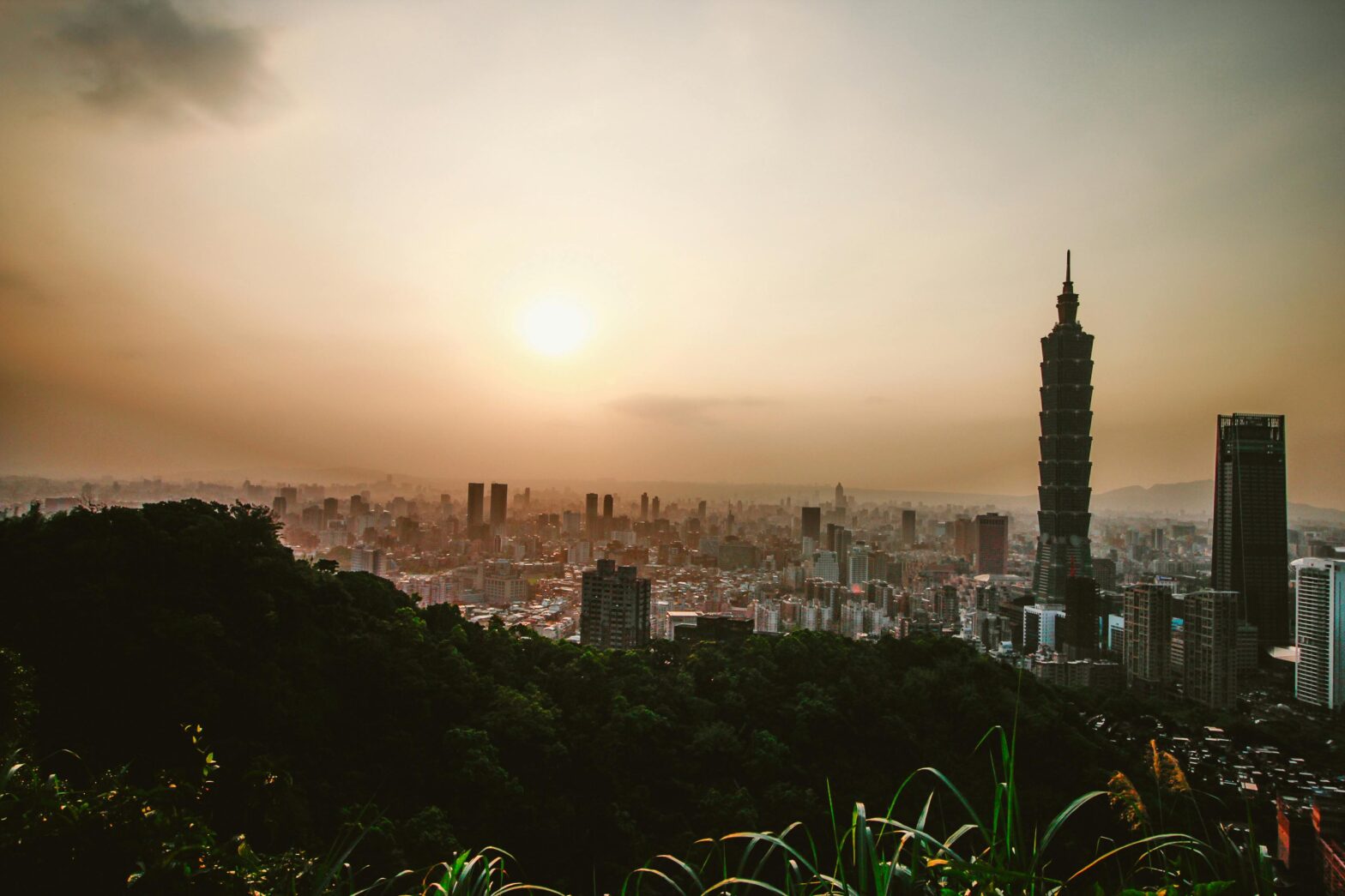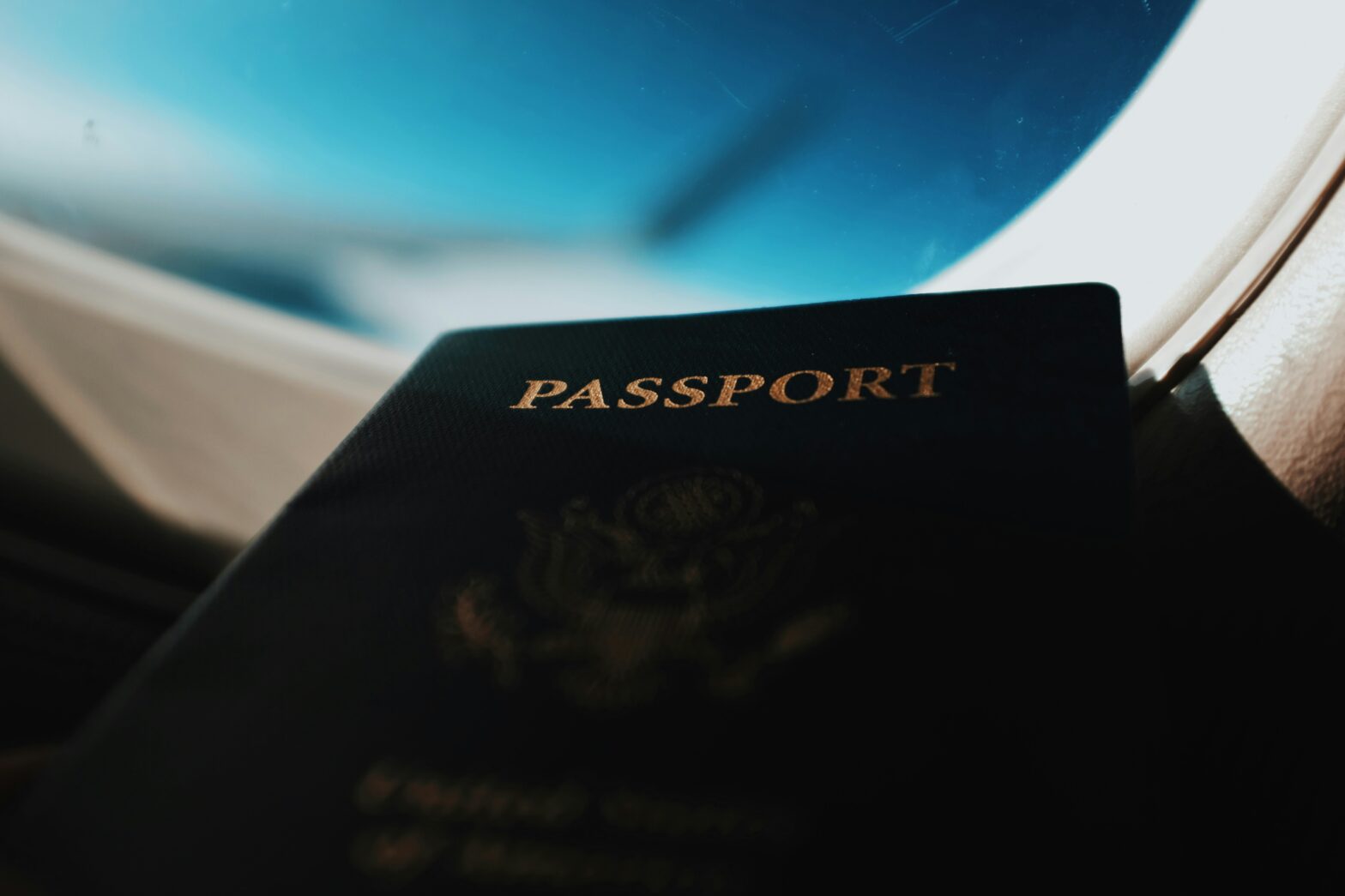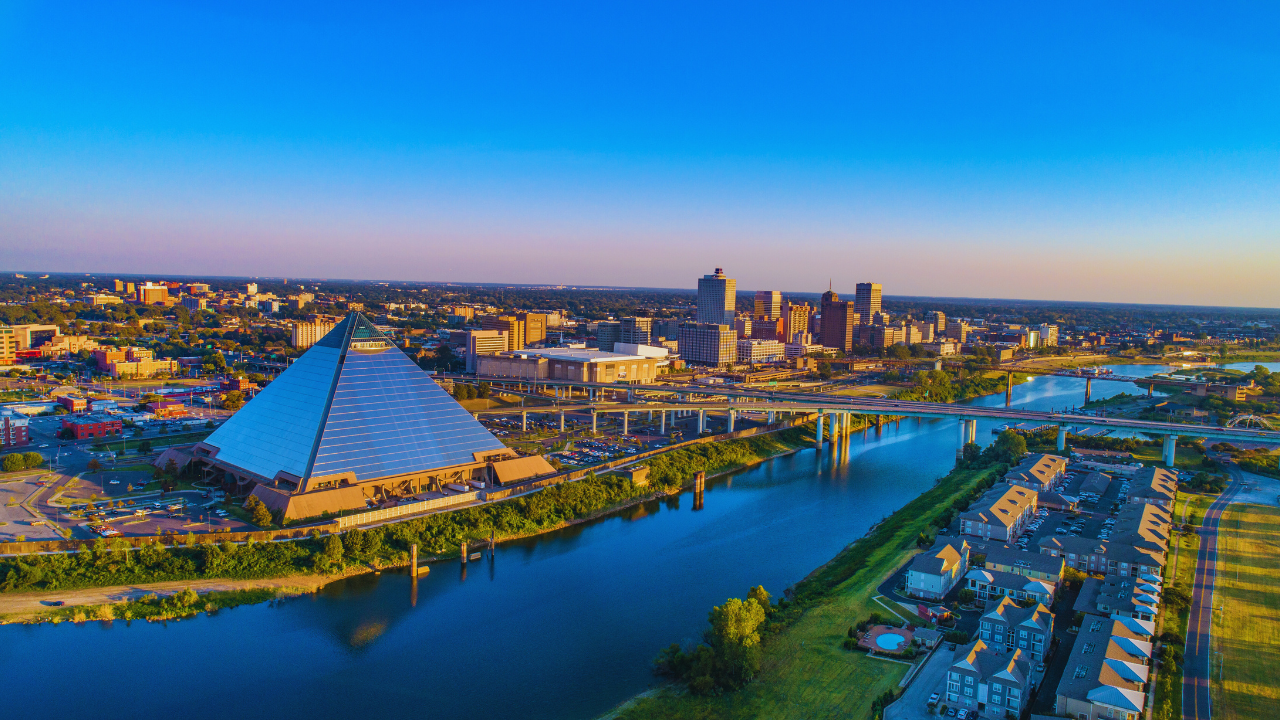It’s impossible to miss the bright mural of a beautiful Black woman who appears to be inviting people into Ma Daisy’s Restaurant. It’s currently the only restaurant in Bluffton, South Carolina, that is preserving Gullah Geechee culture. The painting is of the woman after whom the restaurant is named. In front of Ma Daisy is a table of food as she extends her hands out. For family and the Bluffton community, the portrait perfectly captures the selfless woman, who many describe as willing to feed anyone who came to her front door.
“People of any background would come to her porch, and her words would be, ‘You want something to eat?'” Her granddaughter, Bridgette Fraizer, recalls. “She had 11 kids and never really learned how to make a small pot of food.”
Grandmothers are often the backbone of Black families, serving as caregivers, caretakers, and keepers of family history and customs. This is what Ma Daisy was to Fraizer and more. The two had a special relationship since Frazier’s mother died when she was only seven years old.
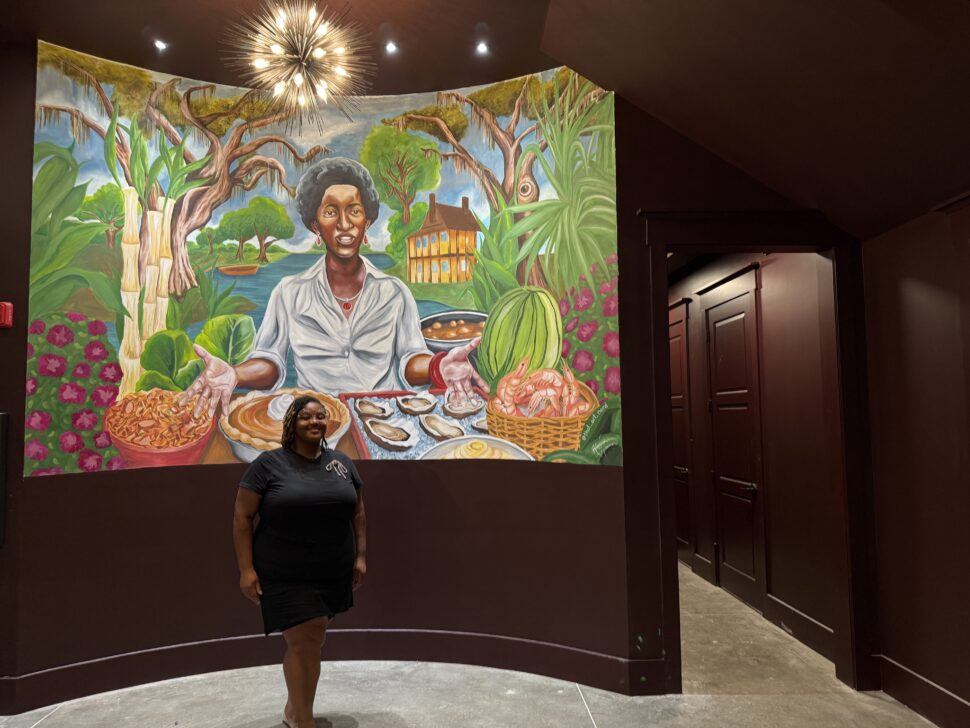
Ma Daisy had a limited education in public school. She grew up during a time when many Black children weren’t educated beyond the second grade. Unfortunately, her family didn’t have the money to send her to a private school, so she had no choice but to join her father in working the fields.
Despite her education, those same hands would go on to tend to acres of her own land and feed neighbors. She also taught Fraizer sacred family recipes passed down from previous generations. Now, Fraizer is taking those seeds that Ma Daisy planted to cultivate a restaurant and cultural heritage center that highlights Gullah Geechee culture, traditions, and influences.
Who Are The Gullah Geechee People?
As Fraizer explains, the Gullah Geechee people are the descendants of enslaved Africans from various countries and ethnic groups across West and Central Africa. At the start of Chattel Slavery, European colonists were studying West Africans for how they cultivated cash crops, particularly rice. Many of those enslaved along the coasts were forced to work on plantations to grow rice, indigo, and more. Most of these descendants, found along the coasts of North Carolina, South Carolina, Georgia, and Florida, represent the Gullah Geechee people.
The coastal regions in the Lowcountry were often isolated from the mainland due to the presence of rivers, marshes, and creeks. Bridges weren’t constructed in these areas until the 1950s and ‘60s. Thus, the geographic isolation allowed those enslaved to preserve their languages and cultures from Africa.

“A lot of people think it was just one language, but if you’re putting people together from 20 different countries and several tribes within those countries, everyone spoke different languages,” says Fraizer. “They had to learn some way to communicate with one another, so they picked up some of the English that they heard, combined with their own, to create their own language.”
The Gullah Geechee have a deep connection to the waterway and have a history of working as oystermen and shrimpers. Many are also known for harvesting clams and crabs.
“The Gullah Geechee diet is heavy in seafood and vegetables,” says Fraizer. “Meat was not in surplus, but we could eat whatever we farmed off the land. Everyone who is Gullah grew something and everything.”
How Ma Daisy’s Porch Conserves Gullah Geechee Culture
Preserving Gullah Geechee culture has been challenging primarily because of how traditions are passed down. There are hardly any written records of the history, language, and customs.
“Everything in our culture is passed down in an oral fashion. You don’t see a lot of our history or customs written because it’s forbidden, even our recipes,” Fraizer adds. “For us, it’s to keep everything sacred and not to take [our culture] for granted by giving it to someone else.”
Climate change, new development, and gentrification have also threatened Gullah Geechee communities. Recently, the language was put on the endangered list, according to the Endangered Languages Project.
“As people come into the community, we lose those who know or want to learn about Gullah culture. It’s assimilation in reverse,” Giovanni Glover, a fifth-generation Gullah and executive director of Ma Daisy’s Cultural Center, says. “Gullah people are assimilating to those that are coming into the area versus people assimilating to the way Gullah people live.”
The restaurant is just one component of preserving this special culture. There are a total of four buildings that make up Ma Daisy’s Porch. In addition to the two-story restaurant, the site will feature a cultural heritage building, a market showcasing local Gullah Geechee-owned businesses, and a bakery. These four buildings will teach people who enter the space about Gullah Geechee culture through food, art, history, storytelling, and more.
“When you think of a porch, you think of a space where family gathered and culturally connected. It isn’t limited to one thing,” says Fraizer. “Someone could be getting their hair done, enjoying a meal there, or grieving after a repast. A porch is somewhere you don’t want to leave.”

Nods To The Gullah Geechee Culture Found Throughout Ma Dasiy’s Porch
Menu items for the restaurant will include Gullah Geechee staples that Fraizer learned how to make, such as red rice, a mix of root vegetables, okra stew, collard green dishes, and sweet potato pie.
In the bakery, she says menu items will be based on what grows in the Lowcountry and is native to the culture. Instead of regular caramel lattes, expect Sweet Potato Caramel lattes and Banana Pudding Mochas. She says baked items such as stuffed beignets and doughnuts in the bakery will be homemade.
“Gullah is not monolithic. We’re not just gumbo and shrimp and grits. We really create. That creativity lends itself to anything, and that will take front and center in many of the dishes,” says Fraizer.
No stone was left unturned when designers created the space. Everything is intentional. Fraizer deviated from the norm found in the region to avoid “whitewashing” the culture and history with the usual “Lowcountry coastal chic” décor. Instead, the compound pays homage to the culture.
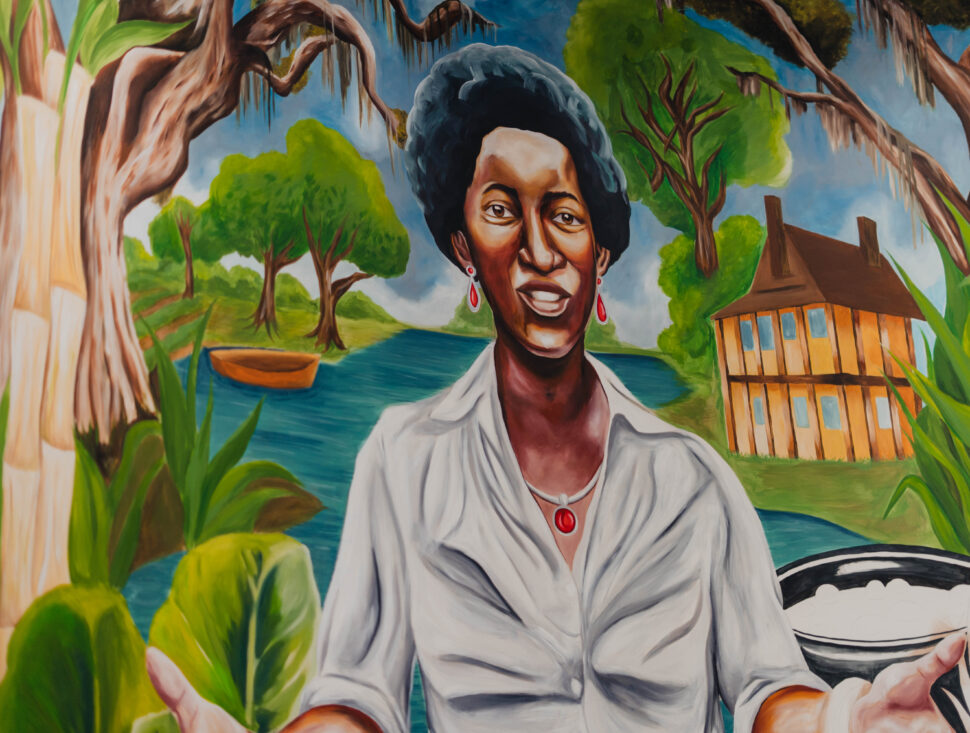
The Making Of Ma Daisy’s
In front of the restaurant, guests will find an interactive Bateau Boat for children on Bateau Boat Plaza. The boat’s roots are indigenous to West African culture and used by the Gullah Geechee culture to navigate the water to harvest oysters, clams, and shrimp. The boats were also used to transport midwives and exchange goods and supplies.
Fraizer’s cousin Frank Kidd is building the bateau boat. He is one of the last remaining bateau boat builders in the area, preserving a cultural tradition. The turf on the plaza will match the color of the marsh and surrounding water to mimic low tide. Two six-foot blue crab replicas will be placed in the plaza.
Guests will notice indigo spread throughout the property, including two Gullah Bottle trees, which have deep ancestral roots believed to protect against evil spirits. The cultural center will feature sweetgrass baskets, hand-woven and sourced from West Africa, along with other classes and workshops for participants to enjoy.
While Ma Daisy’s Porch will soft launch to the world on June 15, the official grand opening is Juneteenth.
